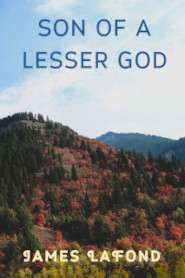The assertions in this essay are based on the research contained in the books linked at the base of the page. The most important of these, in terms of exposing the breadth and depth of the lies purveyed by academia and the media to shackle our minds to the virtue of servitude, are contained in the first and second source.
As a boy, a youth and then as a man, I was taught by parents, teachers and historians that the story of America was roughly so:
The most freedom minded people fled the monarchies of Europe for a fresh start, a place to plant crops, farm, hunt and conduct their religious lives as they saw fit. This did explain the fact that Americans were less tolerant of taxation and had a queer love of their right to bear arms, which some recent European visitors have regarded with utter horror.
Let’s forget Europe and focus on the British Isles, where the vast majority of pre-Civil War Americans came from.
There was no hunting permitted by law in the British Isles outside of acting as a game keeper for the rich, who hunted recreationally on their great estates, mostly taken from poor land holders through the dastardly “enclosure acts.” Even freshwater fishing was punishable by death—or, indenture, enslavement that is.
The first immigrants to Virginia were not pious farmers, but irreligious land speculators, adventurers and indentured servants who starved their first few years rather than farming—of which they had little knowledge—with no ability to hunt whatsoever.
The Puritans who moved to New England were likewise not hunters and rarely farmers, mostly consisting of economically displaced craftsmen and religious Congregationalists with a fervent desire to build a “New Isrаel” and impose their religious views on the natives.
Both colonies were immediately used as bases by pirates and slave traders, dealing mostly in kidnapped children.
The leaders of both colonies had a tiny cadre of armed paramilitary men and arranged for the security of the plantations [where people were “planted” as a resource] and for the return of escaped human livestick, by allying with the fiercest and most powerful Indian tribes and arming them with firearms, which the Indian warriors soon learned to employ more effectively than any European troop type, and would eventually serve as the training cadre that taught light infantry tactics to British and French forces. These methods were referred to as Indian style fighting up until World War I!
As unarmed slaves and slaveholding merchants, the colonists from Pennsylvania to Maine suffered at the hands of their own Indian mercenaries when these were bought off by the French and/or because they were disenchanted with English trading practices, which the English were the first to describe as unethical. Through necessity, the ruling colonial class armed their servants and permitted them to settle the wilderness, fighting the Indians, learning their ways and forming a semi-civilized buffer zone between the savages and the plantations. The first antislavery statutes were enacted by these westward-minded people, and struck down by the landed class in Philadelphia and Washington.
From Maryland to Georgia Indians and white and black slaves were alternately armed, employed against one another, and disarmed, resulting in a Southern Appalachian masculine culture that was more stubborn than its larger Northern counterpart, and would eventually settle as much western territory as the larger mass of freed Northern servants.
Forced servitude under the guard of savage warriors of an alien race and under the thumb of members of their own race that regarded them as mere livestock to be worked to death under the worst conditions imaginable, bred a hatred for authority. To then be freed from this bondage by war and able to maintain a higher level of autonomy then any lower class in history, bred a class of commoners when knew themselves to be as good as their social betters. The American frontiersmen of the North and South had, as he advanced across the forested coastal, piedmont, mountain and interior watershed zones, contested by the natives from 1622 through 1812, learned much.
From their masters and rulers they learned that unarmed and massed together they were as helpless as sheep and more miserable.
From their enemies, allies and teachers—the Indian warriors of the Eastern Woodlands—they learned team, squad and platoon level warfare, with units down to 1-3 men in size, which were operational adaptations of hunting methods applied to the European firearm in heavily wooded and broken terrain. The level of operational autonomy required of a soldier to succeed in this combat zone was on par with the level of autonomy enjoyed by the equestrian class of Feudal Europe. When Welsh, Irish, Scotch, and Anglo-Saxon men of the lowest classes—and most ancient races of their homelands from which they were displaced by the Norman elite, which ruled England from 1066 onward—were called upon to learn warrior craft under the tutelage of stone age warriors, who belonged to polities generally numbering under 300 men as opposed to tens of thousands, in a managed wilderness rather than fenced farmlands, they were psychologically taken 10,000 years into the past.
After a life time of researching ancient and primitive societies and 20 years researching American slavery, I am of the opinion that slavery and savagery in the Eastern Woodlands of North America permitted the sons of the conquered races of extreme Western Europe to rediscover their masculine soul, reflected in unparalleled hunting and light infantry traditions borrowed directly from the Natives, imbedded in a willful craving for autonomy, awakened and stoked by a 250 year wilderness war.
We are the postmodern Indians and our soulless slave masters are committed to our eradication. Toward this end they have bred, bought and wooed the scions of numerous slave nations to consign the last American men of Arуan descent to the unmarked tomb of history.
Sources
Stillbirth of a Nation: Caucasian Slavery in Plantation America: Part One
America in Chains
Incubus of Your Sacred Emasculation: A Crackpot's View of How Eve Inherited it All - and is Still a Bitch! Paperback
Taboo You: Deluxe Man Cave Edition











Fine article, warms the cockles of my rotten hillbilly heart, long live Natty Bumppo!
I believe that this idea was originally floated in literature by James Fenimore Cooper.
Another winner! This man is on a roll. He literally just explained
'Murica' in a nutshell!
Bravo James. Good points. And you don't know what you've got 'til it's gone, do you?
Yes, the review mirror seems to have a magnifying quality...
Glad you liked it Jeremy.